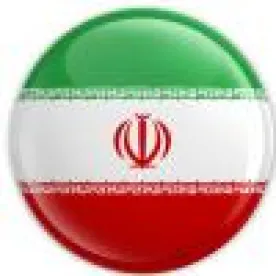The framework agreement reached at Lausanne is much more extensive than the November 2014 interim agreement, which froze Iran’s nuclear program in place, in return for modest sanctions relief (around $7 billion annually). Although it has no binding legal impact, the framework is much more detailed. It is an outline for an eventual binding agreement. Nevertheless, it specifies what is expected on all sides and provides a good idea of what a final agreement might entail. There is a self-imposed June 30 deadline, but just as the March 31 deadline for the framework was extended, so too, it could be extended for the final agreement.
There is no certainty that the gaps that remain in the framework can be bridged by the parties to allow a final agreement to be signed. My own experience, from the Camp David Accords, which was also a non-binding framework agreement, is that converting it into treaty form, in that case the Israel-Egypt Peace Treaty, is an excruciatingly difficult process, then taking twice the time allotted in the Camp David Accords, and almost failing, until President Carter made a last gasp trip to the region. The issues in the Iran agreement are even more complex. But the odds of reaching an agreement are very high, in my estimation, because of the momentum that was created by the framework and the agreement on several crucial areas
The goal of the U.S. and its p5+1 partners was to cut off every avenue for Iran to develop a nuclear weapon, monitored by intrusive inspections from the International Atomic Energy Agency (IAEA), and to keep Iran at least one-year away from a “break-out” to a nuclear weapon, if Iran decides to abandon the agreement and pursue a nuclear weapon.
Iran’s goal was to be left with a substantial industrial-scale nuclear program, to avoid having to dismantle any of its nuclear facilities, and to have international sanctions removed–from the U.S., the European Union, and the United Nations. It also sought, and achieved after the 15 year period of the proposed agreement, to have virtually no constraints on its nuclear program.
From the Administration’s perspective, they achieved the following:
(1) Iran had around 300 centrifuges at its Natanz plant in 2003, several thousand by the end of the Bush Administration. It now has over 9000 operating centrifuges, with another 10,000 ready to come on line, for a total of 19,000. These centrifuges enrich uranium, which, when upgraded to a 90% level, becomes nuclear weapons grade. Iran would be required to reduce the number of operating centrifuges to 6104, of which 5060 could be used for the next ten years, a cut of around two-thirds.
(2) Iran’s underground plant at Fordo would be converted into a research facility for medical isotopes.
(3) Iran would be required to reduce its inventory of low-enriched uranium from 10,000 kilograms to only 300 kilograms, less than necessary for one atomic bomb, and to dilute it to a level no greater than civilian grade. All of its 20% enriched uranium, which can be more quickly converted into weapons grade is already reduced by the interim accord. And Iran would be precluded from enriching for 15 years above 3.67%, which could be used for power plants but not bombs. It could only maintain the one facility at Natanz to enrich uranium.
(4) Iran’s path to use plutonium as another path to a possible nuclear weapon would be blocked by having to reconfigure and redesign (but not dismantle) its heavy-water plant at Arak. So it did not produce weapons-grade uranium.
(5) Iran will sign the additional protocol of the Non-Proliferation Treaty (NPT), which allows for 24/7 inspections by the IAEA, including Iran’s supply chain.
(6) While the agreement is due to last 15 years, there is a 25 year limit on Iran’s uranium supply chain (mining, milling, etc.).
(7) The Administration also believes there is no effective alternative, short of military action, to achieve more.
(8) The Administration asserts that sanctions would “snap-back” if there is a violation.
Unresolved issues
There are a number of significant unresolved issues, some in the sanctions area, which must be bridged. These include the following:
(1) The U.S. and p5+1 want Iran to send its stockpile of enriched uranium outside the country (Russia/France) for reprocessing in ways that make it virtually impossible to use for a bomb. Iran insists on keeping the uranium in the country, but subject to IAEA inspection.
(2) There is major disagreement about the timetable for ending of sanctions. The U.S. wants to phase-out sanctions as Iran demonstrates compliance with the terms of the agreement. Also, the U.S. has talked about a “suspension” of sanctions, while Iran wants to “terminate” sanctions immediately upon signature. The Administration will try to continue to align our sanctions regimes, as we have done in the past. Both sides recognize that the only us sanctions that will be ended are those related to Iran’s nuclear activities.
(3) There is no understanding on whether or not Iran must answer all 12 questions from the IAEA on the possible military dimensions (PMD) of their program, as a condition of lifting the UN sanctions. They have only answered one.
(4) There is no agreement on what research Iran can do during the 15 year period in terms of research on advance centrifuges; how quickly Iran can ramp-up its centrifuge program at the end of the 15 year period; and whether they can then introduce the next generation of centrifuges, which are much more powerful and can produce uranium much more quickly than the current generation.
(5) Tthere is a disagreement on the scope of the IAEA inspections, and whether the IAEA inspections would last 25 years. There is still no agreed-upon mechanism to resolve disputes over what can and cannot be inspected.
Criticism
Why are the Israelis, parts of the Arab world, and many in the U.S. Congress opposed to the framework? The Chief Iranian Negotiator, Foreign Minister Zarif had his spin for his home audience: “We will continue enriching; we will continue research and development; our heavy-water reactor will be modernized; and our facility at Fordo will remain open.” (David Sanger and Michael R. Gordon, “White Board, All-Nighters and Espresso”, New York Times, April 4, 2015.)
Israel has within the last few days taken a somewhat different tact. They continue to oppose the framework as much as ever, but now realize they cannot totally eliminate Iran’s centrifuges, and have taken the position of making suggestions of how to improve the agreement. In my opinion, a military strike by Israel is now out of the question because of the framework, because their allies in Congress are pressing for more sanctions, and because they do not have the military assets (e.g. bunker-busting bombs) to achieve a decisive result.
(1) There is a basic lack of trust of Iran. They have not answered the IAEA’s 12 questions about their possible military program. They denied the existence of their Fordo facility for years until President Obama disclosed it in 2009. This was a direct violation of the Non-Proliferation Treaty, which allows no secret work that could be used for nuclear warheads. Even after its disclosure, far from contrite, Iran began to install hundreds of centrifuges in late 2011, enriching uranium at just under 20%. The number leaped to 2700 by 2012 (although only 696 were in use). (In late 2013, Iran agreed to stop purifying uranium there at levels beyond 5%.)
(2) There is a belief than once sanctions are removed, they can never effectively be put-back in place, if there is a violation, particularly the US-EU cooperation in areas like swift sanctions.
(3) The underground facility at Fordo can maintain 1000 centrifuges, although they cannot have fissile material, but will spin another element for a medical isotope. David Albright, the President of the Institute for Science and International Security wrote in 2014 that the complete dismantlement of Fordo was crucial. (William J. Broad, “Nuclear Plant Deep in Iranian Desert Emerges as Flash Point in Negotiations”, NYT, April 4, 2015.)
(4) All R&D on advanced centrifuges should be ended, and are not by the framework.
(5) After the 15 year period, in 2030, Iran could use more advanced centrifuges and move toward a bomb.
(6) Iran has said it would never permit the shipment of its enriched uranium outside the country. Leaving in Iran, but subject to inspection, is a prescription for cheating.
(7) The IAEA does not/not have “anywhere, anytime” access to verify the agreement. This is critical with possible North Korean-Iranian cooperation on ballistic missiles and nuclear weapons technology. (Ali Alfoner and Reuel Marc Gerecht, “What Else is Iran Hiding?”, Post, March 30, 2015.)
(8) There will be no inspections of any Iranian military facility, including the one at Parchin which is widely believed to have been a site for military applications of their nuclear program.
(9) There are no limits on their medium and long-range missile program.
(10) Iran has refused to answer all 12 IAEA questions to earn full sanctions relief. Without knowing the extent of their past military dimensions (PMDs) it is difficult to know how quickly Iran could build a nuclear weapon.
(11) A one year breakout time may not be sufficient to detect and reverse Iranian violations. (Michael Hayden, Olli Heinonen and Ray Takeyh, “A Time Bomb on Iran”, Post, March 23, 2015) because of the time necessary to detect a violation, to get consensus in the U.S. about it, and to present it to the IAEA, who would only then talk with the Iranians about getting access to disputed sites and activities. Iran would push back. The IAEA would have to go to the UNSC if it found non-compliance, where Russia and China could veto action. Iran would lull the world with small infractions to avoid a crisis.
Conclusion
There is obviously a lot of ground for the negotiators to cover to bridge the existing gaps and to try to satisfy some of the concerns.




 />i
/>i
